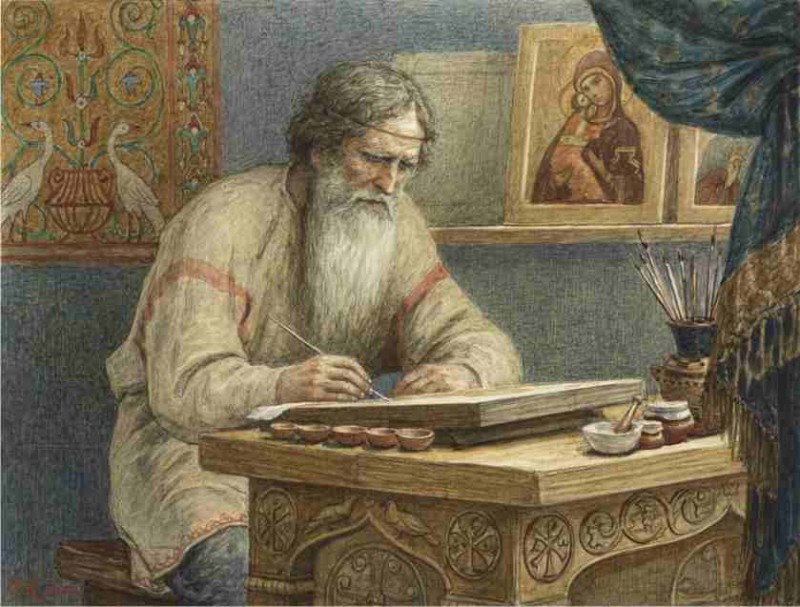The recent TV miniseries on the History Channel, “The Bible,” proved to be a big hit, since it cleverly coincided with the preparation period before the Western celebration of Pascha. No less than ten million people followed each of the five episodes of what was supposed to be a sort of Reader’s Digest version of the history contained in Holy Scripture.
Ten million people is a lot of people to follow a Bible-based show, and I wondered how it is that, in a society that is as secularized and cross-cultural as ours, we can still find that many people interested in what the old Bible has to say.
I found the answer in an article from the Christian Post that called it “the most watched entertainment television show for 2013.” “Eureka!” as Archimedes would say from his famous water pool. It is all entertainment.
The Roman emperors knew this formula very well when they offered their commoners bread and circus: feed them and give them entertainment! I can very easily imagine ten million viewers (sure, maybe not all of them) sitting on their comfortable couches, eating popcorn and drinking sodas, while watching the computer-generated devastation of Noah’s flood and the parting of the Red Sea, the warrior angels fighting the bad guys from Sodom and Gomorrah with swift Ninja moves, and the thrilling trial and graphic passion of Jesus Christ. How is this different from the daily news showing live hurricanes hitting our shores, or an installment of the Lord of the Rings trilogy, or a show like Judge Judy? Frankly, I don’t think that for many of the viewers there was much of a difference.
A movie about the Bible, however, should be, above all, a moving icon, a reverent visual depiction of sacred history. It shouldn’t be approached irreverently, just like any other “entertaining” subject meant to boost channel ratings. For us, as Eastern Orthodox Christians, this “show” is particularly disturbing because we understand and approach icons in a very different manner. How is it different? First, the people who take on the difficult task of writing sacred history in colors treat the subjects of their creations in a very pious manner with fasting and prayer, always trying to stay within the Holy Traditions that have always guided their compositions. They do not invent anything new; they are just exposing the revealed glory of God. Their work serves a high purpose: it is a kind of ministry to the people who use their handiwork. But in order to achieve this goal, they must try to match their personal lives as closely as possible to those of their saintly subjects. Think of St. Lazarus the Iconographer of Constantinople, St. Andrei Rublev from Russia, St. Gregory the Iconographer of the Kiev Caves, and many other pious writers of icons from the past, and you will clearly understand what I mean.
How is it different? First, the people who take on the difficult task of writing sacred history in colors treat the subjects of their creations in a very pious manner with fasting and prayer, always trying to stay within the Holy Traditions that have always guided their compositions. They do not invent anything new; they are just exposing the revealed glory of God. Their work serves a high purpose: it is a kind of ministry to the people who use their handiwork. But in order to achieve this goal, they must try to match their personal lives as closely as possible to those of their saintly subjects. Think of St. Lazarus the Iconographer of Constantinople, St. Andrei Rublev from Russia, St. Gregory the Iconographer of the Kiev Caves, and many other pious writers of icons from the past, and you will clearly understand what I mean.
The other aspect has to do with the people who approach the finished icons as viewers and users. Icons are always placed in prominent places in our churches and houses to be used for the sole purpose of lifting our mind to God in prayer, not to admire their masterful lines or sophisticated color choices. In our tradition, we never look at icons as an art form, as something that we would enjoy viewing in a museum gallery, but as sacred objects by means of which the unseen is made visible and the spiritual is connected with the material. This is why we always have a reverent posture in front of them, either standing, kneeling, or making prostration – but by no means admiring them with legs crossed and a beer in our hands. Icons keep us engaged in our faith and salvation; they do not confine us to being passive viewers of sacred history.
This is why “The Bible” show fails to become more than what the headlines called it: an entertainment show. Its producers approached it no differently than any other moneymaking script, and the result was that the sacred account of the history of humankind was reduced to the standard Hollywood recipe for a fast-paced action thriller. This is what their viewers demand: not a transforming icon, but a cleverly done pastime favorite, a formula to attract curious viewers and nothing else. Treated in this way, it will make no change in people’s lives, it won’t attract new people to the faith, nor will it deepen the faith of others. It will only live as a soon-to-be forgotten show, until maybe a fictional Bible 2.0 sequel will hit the TV screens to milk the franchise. It’s all entertainment!



















